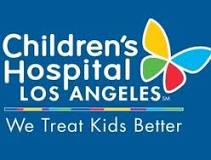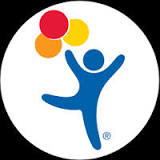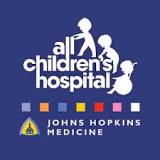Treosulfan/Fludarabine/Low Dose TBI as a Preparative Regimen for Children With AML/MDS Undergoing Allo HCT
| Status: | Completed |
|---|---|
| Conditions: | Blood Cancer, Hematology |
| Therapuetic Areas: | Hematology, Oncology |
| Healthy: | No |
| Age Range: | Any - 21 |
| Updated: | 4/21/2016 |
| Start Date: | September 2013 |
| End Date: | August 2015 |
A Phase II Study of Treosulfan/Fludarabine/Low Dose Total Body Irradiation as a Preparative Regimen for Children With AML/MDS Undergoing Allogeneic Hematopoietic Cell Transplantation
This is a prospective, open-label, nonrandomized, prospective clinical trial evaluating a
fixed regimen of treosulfan, fludarabine and low-dose total body irradiation (TBI) in
children with acute myeloid leukemia (AML) and myelodysplastic syndrome (MDS) undergoing
allogeneic hematopoietic cell transplantation (HCT). The primary hypothesis is that HCT with
a preparative regimen consisting of treosulfan, fludarabine and low-dose TBI will result in
overall survival (OS) comparable to historical rates observed with conventional
myeloablative regimens in the pediatric population. The preparative regimen will result in
adequate incidence of neutrophil and platelet engraftment, and acceptable rates of
graft-versus-host disease (GVHD), relapse and survival. The pharmacokinetic (PK) profile of
treosulfan in children will be comparable to that of adults previously studied.
fixed regimen of treosulfan, fludarabine and low-dose total body irradiation (TBI) in
children with acute myeloid leukemia (AML) and myelodysplastic syndrome (MDS) undergoing
allogeneic hematopoietic cell transplantation (HCT). The primary hypothesis is that HCT with
a preparative regimen consisting of treosulfan, fludarabine and low-dose TBI will result in
overall survival (OS) comparable to historical rates observed with conventional
myeloablative regimens in the pediatric population. The preparative regimen will result in
adequate incidence of neutrophil and platelet engraftment, and acceptable rates of
graft-versus-host disease (GVHD), relapse and survival. The pharmacokinetic (PK) profile of
treosulfan in children will be comparable to that of adults previously studied.
The proposed study will evaluate a regimen using treosulfan, fludarabine and low-dose TBI in
children and adolescents with AML or MDS undergoing allogeneic HCT. We expect this regimen
to yield lower toxicity and at least equivalent rates of disease control and overall
survival, compared to current standard myeloablative regimens. The primary objective of this
study is to determine the safety and preliminary efficacy of a transplant preparative
regimen consisting of treosulfan, fludarabine and low-dose TBI for children with AML and
MDS. The primary endpoint will be overall survival (OS) at one year. Secondary objectives to
be studied include: pharmacokinetic (PK) profile of treosulfan in children < 40 kg,
non-relapse mortality, disease-free survival, incidences of neutrophil and platelet
engraftment, donor chimerism, acute and chronic graft-versus-host disease (GVHD), and
relapse.
children and adolescents with AML or MDS undergoing allogeneic HCT. We expect this regimen
to yield lower toxicity and at least equivalent rates of disease control and overall
survival, compared to current standard myeloablative regimens. The primary objective of this
study is to determine the safety and preliminary efficacy of a transplant preparative
regimen consisting of treosulfan, fludarabine and low-dose TBI for children with AML and
MDS. The primary endpoint will be overall survival (OS) at one year. Secondary objectives to
be studied include: pharmacokinetic (PK) profile of treosulfan in children < 40 kg,
non-relapse mortality, disease-free survival, incidences of neutrophil and platelet
engraftment, donor chimerism, acute and chronic graft-versus-host disease (GVHD), and
relapse.
Inclusion Criteria:
1. Age < 21 years.
2. Disease and disease status:
- Acute myeloid leukemia (AML) in morphologic remission (defined as < 5% blasts in
a bone marrow aspirate of adequate cellularity performed within 28 days from
start of conditioning).
- Myelodysplastic syndrome (MDS): Any 2008 WHO classification subtype (Appendix
I). RAEB-2 patients may proceed directly to transplant, but may also be
considered for induction chemotherapy before transplant. Patients with ≥20%
morphologic marrow blasts will require induction therapy to reduce morphologic
marrow blasts below 5% before transplant.
3. Karnofsky Index or Lansky Play-Performance Scale > 70 % on pre-transplant evaluation.
Karnofsky scores must be used for patients > 16 years of age and Lansky scores for
patients < 16 years of age.
4. Able to give informed consent if > 18 years, or with a legal guardian capable of
giving informed consent if < 18 years.
5. Negative pregnancy test (serum, urine β-HCG, or other test per institutional
guidelines) for females of childbearing potential.
6. A single previous autologous or allogeneic HCT is allowed as long as the time from
first to second transplant hematopoietic cell infusion is no less than 6 months.
7. With a suitable allogeneic hematopoietic cell donor including, as available:
- HLA-identical related donor matched for HLA-A, and -B at the serologic level at
minimum and -DRB1 at high resolution by molecular typing. A single locus
mismatched related donor (7/8 matched) is permitted only if there are no 8/8
matched unrelated donors available.
- Unrelated volunteer donor matched for HLA-A, -B, -C and -DRB1 defined by high
resolution molecular typing. A single HLA antigen or allele mismatch (7/8
matched) is permitted.
- Unrelated cord blood (UCB) matched to the recipient at a minimum of 4 of 6 loci
at HLA-A, and -B by intermediate resolution and -DRB1 by high resolution. Cord
blood unit(s) will be selected using the following criteria:
1. Unit selection is based on the cryopreserved total nucleated cell (TNC)
dose and matching at HLA-A, -B intermediate resolution and -DRB1 high
resolution typing. While HLA-C antigen/allele level typing is not
considered in the matching criteria, if available, it may be used to
optimize unit selection.
2. Selection of two UCB units is required if a single UCB unit will not
provide a sufficient cell dose (see Table 1 below). When two UCB units are
not required per Table 1, two UCB units may be used with approval of the
study chair or designee. When two units are selected, the following rules
apply:
- The UCB unit with the least HLA disparity with the patient, followed by the
larger cell dose for equivalently matched units, will be considered unit #1
(selection priority is 6/6 match >5/6 match>4/6 match).
- An additional UCB unit may be required to achieve the required cell dose, as
outlined in the table below. The second unit will be the one that most closely
HLA matches the patient and meets minimum size criteria as outlined below (i.e.
a smaller and more closely matched unit will be selected over a larger less well
matched unit as long as minimum cell dose criteria are met).
- Each UCB unit MUST contain at least 1.5 x 10^7 TNC per kilogram recipient
weight.
3) Other comments about cord blood unit selection:
- Use of unlicensed cord blood units will adhere to current federal regulatory
requirements for procurement.
- Units will be selected based on the TNC dose and HLA matching.
- A UCB unit that is 4/6 or 5/6 mismatched but homozygous at the locus of mismatch
should be chosen over a 5/6 unit with bidirectional mismatch even if the latter
unit provides a larger cell dose. This is only applicable to choosing units
within a given match grade.
- Within the best HLA match grade, the unit containing the greatest number of
cells will be chosen. If there are two units of equivalent cell dose within a
match level, choose the unit with best match by higher resolution molecular
typing, if known.
- Other factors to be considered:
i. Within the same HLA match grade, matching at both DR loci is preferable. ii.
UCB units sourced from cord blood banks located in the United States are
preferred.
iii. Younger units are preferred over older units, all other factors being equal.
8. Adequate organ function, defined as:
- Pulmonary: FEV1, FVC, and corrected DLCO must all be ≥ 50% of predicted by
pulmonary function tests (PFTs). For children who are unable to perform for PFTs
due to age, the criteria are: no evidence of dyspnea at rest and there is no
need for supplemental oxygen.
- Renal: GFR estimated by the updated Schwartz formula ≥ 90/min/1.73 m2, i.e.
height (cm)/serum creatinine (mg/dl) > 220. If the estimated creatinine
clearance is < 90 ml/min/1.73 m2, then renal function must be measured by
24-hour creatinine clearance or nuclear GFR, and must be > 70 mL/minute/1.73 m2
- Cardiac: Shortening fraction of ≥ 27% by echocardiogram or radionuclide scan
(MUGA) or ejection fraction of ≥ 50% by echocardiogram or radionuclide scan
(MUGA)
- Hepatic: SGOT (AST) or SGPT (ALT) < 5 x upper limit of normal (ULN) for age;
Conjugated bilirubin < 2.5 mg/dL, unless attributable to Gilbert's Syndrome.
9. Co- enrollment in PBMTC ONC 1001 (CIBMTR 09-MRD) protocol and/or CIBMTR 10-CBA
protocol (NMDP cord blood IND) is allowed. Co-enrollment on any other studies where
experimental therapy is being administered will be handled on a case-by-case basis
and must be discussed with the study chair or designee prior to enrollment.
Exclusion Criteria:
1. Pregnant or lactating females are ineligible as many of the medications used in this
protocol could be harmful to unborn children and infants.
2. Patients with HIV or uncontrolled fungal, bacterial or viral infections are excluded.
Patients with history of fungal disease during induction therapy may proceed if they
have a significant response to antifungal therapy with no or minimal evidence of
disease remaining by CT evaluation.
3. Patients with active CNS leukemia or any other active site of extramedullary disease
at the time of enrollment are not permitted. Note: Those with prior history of CNS or
extramedullary disease, but with no active disease at the time of pre-transplant
workup, are eligible.
4. Patients undergoing a course of chemotherapy using another investigational drug.
5. Patients diagnosed with Fanconi Anemia.
We found this trial at
23
sites
University of Michigan The University of Michigan was founded in 1817 as one of the...
Click here to add this to my saved trials
Cleveland Clinic Cleveland Clinic is committed to principles as presented in the United Nations Global...
Click here to add this to my saved trials
Nationwide Children's Hospital At Nationwide Children’s, we are creating the future of pediatric health care....
Click here to add this to my saved trials
Children's Mercy Hospital Children's Mercy Hospitals and Clinics continues redefining pediatric medicine throughout the Midwest...
Click here to add this to my saved trials
Childrens Hospital Los Angeles Children's Hospital Los Angeles is a 501(c)(3) nonprofit hospital for pediatric...
Click here to add this to my saved trials
Univ of Minnesota With a flagship campus in the heart of the Twin Cities, and...
Click here to add this to my saved trials
7700 Floyd Curl Dr
San Antonio, Texas 78229
San Antonio, Texas 78229
(210) 575-7000

Methodist Children's Hospital of South Texas Methodist Children
Click here to add this to my saved trials
1100 Fairview Avenue North
Seattle, Washington 98109
Seattle, Washington 98109
(206) 667-5000

Fred Hutchinson Cancer Research Center At Fred Hutchinson Cancer Research Center, our interdisciplinary teams of...
Click here to add this to my saved trials
Children's Hospital Colorado At Children's Hospital Colorado, we see more, treat more and heal more...
Click here to add this to my saved trials
Click here to add this to my saved trials
171 Ashley Avenue
Charleston, South Carolina 29425
Charleston, South Carolina 29425
843-792-1414

Medical University of South Carolina The Medical University of South Carolina (MUSC) has grown from...
Click here to add this to my saved trials
Click here to add this to my saved trials
Click here to add this to my saved trials
Click here to add this to my saved trials
University of Wisconsin-Madison In achievement and prestige, the University of Wisconsin-Madison has long been recognized...
Click here to add this to my saved trials
Click here to add this to my saved trials
Click here to add this to my saved trials
Phoenix Children's Hospital Phoenix Children's Hospital has provided hope, healing, and the best healthcare for...
Click here to add this to my saved trials
Click here to add this to my saved trials
Click here to add this to my saved trials
Click here to add this to my saved trials
All Children's Hospital All Children's Hospital provides expert pediatric care for children and families from...
Click here to add this to my saved trials
Click here to add this to my saved trials









